JOHN S. ALLEN'S BICYCLE FACILITIES, LAWS AND PROGRAMS PAGES |
||
 |
 |
|
JOHN S. ALLEN'S BICYCLE FACILITIES, LAWS AND PROGRAMS PAGES |
||
 |
 |
|
Two-way bike lanesA two-way bike lane has all of the most troublesome features of a sidepath (see pages on sidepaths), and in addition places bicyclists directly adjacent to motor vehicle traffic traveling in the opposite direction. Often, two-way bike lanes are intended also to serve as sidewalks. The example below is on a road near the entrance to Fort Stevens State Park, near Hammond, Oregon (photo taken 1987). A wide shoulder has been constructed on one side of the roadway and designated for two-way bicycle travel. There is only a gravel shoulder on the other side. The bicyclist in the distance is riding in the travel lane, for lack of a paved shoulder. If a two-way bike lane is as wide as this one, there is probably little hazard from parallel traffic except after dark, when bicyclists traveling opposite the motor traffic are blinded by the bright side of motor vehicle headlamp beams. But at any driveway or intersection, the usual wrong-way conflicts occur. |
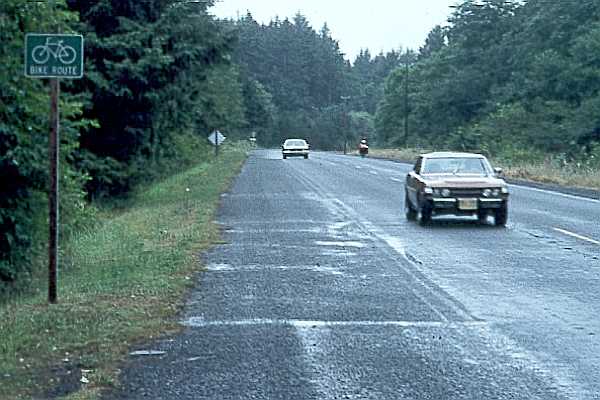
My understanding is that the example below was the work of a landscape architect with no training in traffic engineering. This two-way "bike way-walk" was borrowed from the none too ample width of the entryway of the Cape Cod Academy, a private school in Osterville, on Cape Cod, Massachusetts (photo taken 1985). Here, an attempt to use paint to separate bicycle traffic from motor traffic is taken to its most absurd extreme. Bicyclists who are headed out of the entryway are directed to ride in head-on conflict with entering motor vehicles, such as the bus in the photo, and also with other bicyclists in a 4 foot wide lane. Bicyclists who wish to make a right turn onto the road must cross all the entering and exiting traffic. Pedestrians also are directed to use the "bike way-walk". I never saw either bicyclists or pedestrians use it. Bicyclists rode in the normal position on the entryway, and pedestrians walked on the grass at the side. |
Cape Cod Academy "bike way-walk"
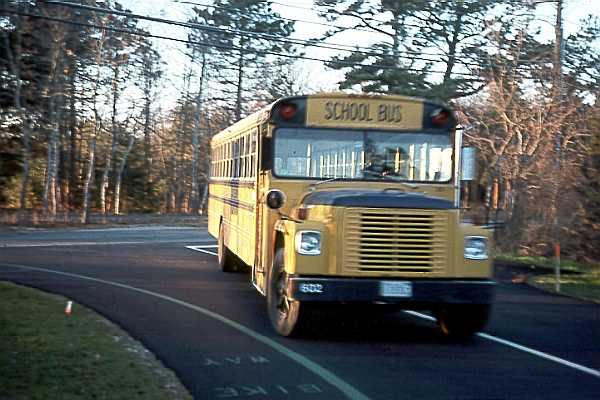
| If we turn 180 degrees, we see how the bike way/walk leaves the roadway, inviting bicyclists to run a gauntlet of car doors and people getting in and out of cars -- this is also the student pick-up and drop-off line for the school. Bicyclists headed toward the camera are directed to swerve out into the entryway. |
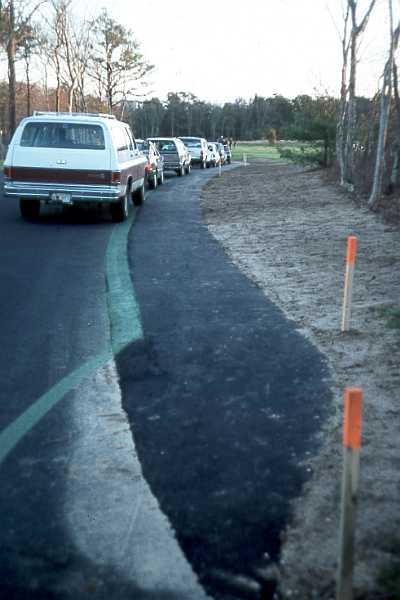
| The photos below illustrate a similar swerve-out problem.. These photos were contributed on condition of not publicizing the location: the community is in the process of removing the two-way bike lane. The swerve-out into the two-way bike lane here is particularly hazardous, as it occurs just as motor vehicles are turning to enter a driveway. Notice also the building on the left in the first photo, which prevents bicyclists traveling away from the camera and motorists who are about to exit the driveway from seeing each other. Nasty! |
Two-way bike lane, somewhere in the USA
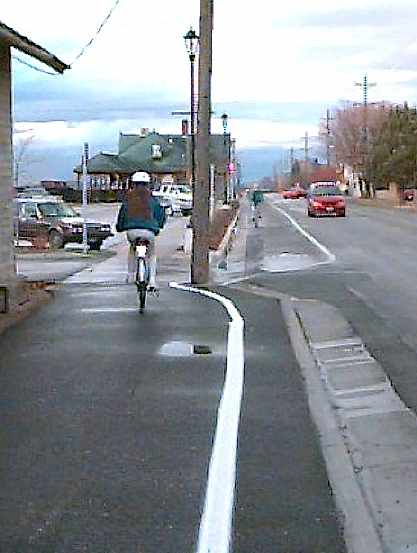
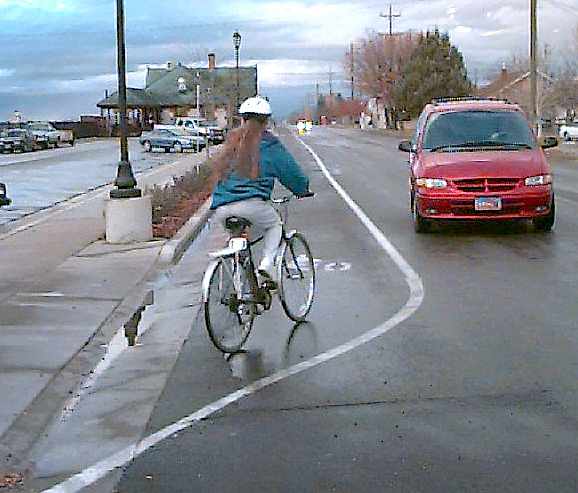
| The two-way bike lane/sidewalk below, in a part of Olympia, Washington which was becoming suburbanized, is a prime example of "oh, gee, now we need a sidewalk, and oh, yes, it's a bike lane too" (photo taken 1991). The bicyclists in the background are participants in a survey tour conducted by the Cascade Bicycle Club. The trash cans in the foreground have been left in the bike lane by the city trash collectors who emptied them. The narrow lane is separated from the rest of the roadway by a row of raised lane markers which are hazardous for bicyclists. To some extent, the markers make it into a barrier bike lane, as described on another page in this series. |
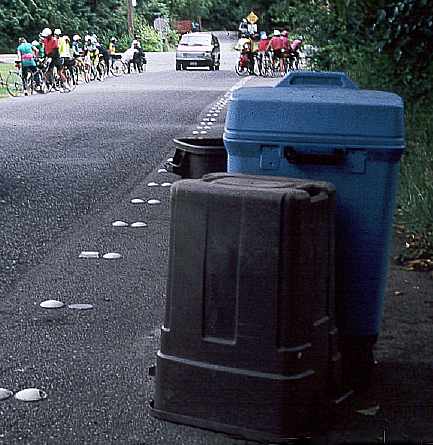
Contents © 2001, John S. Allen |